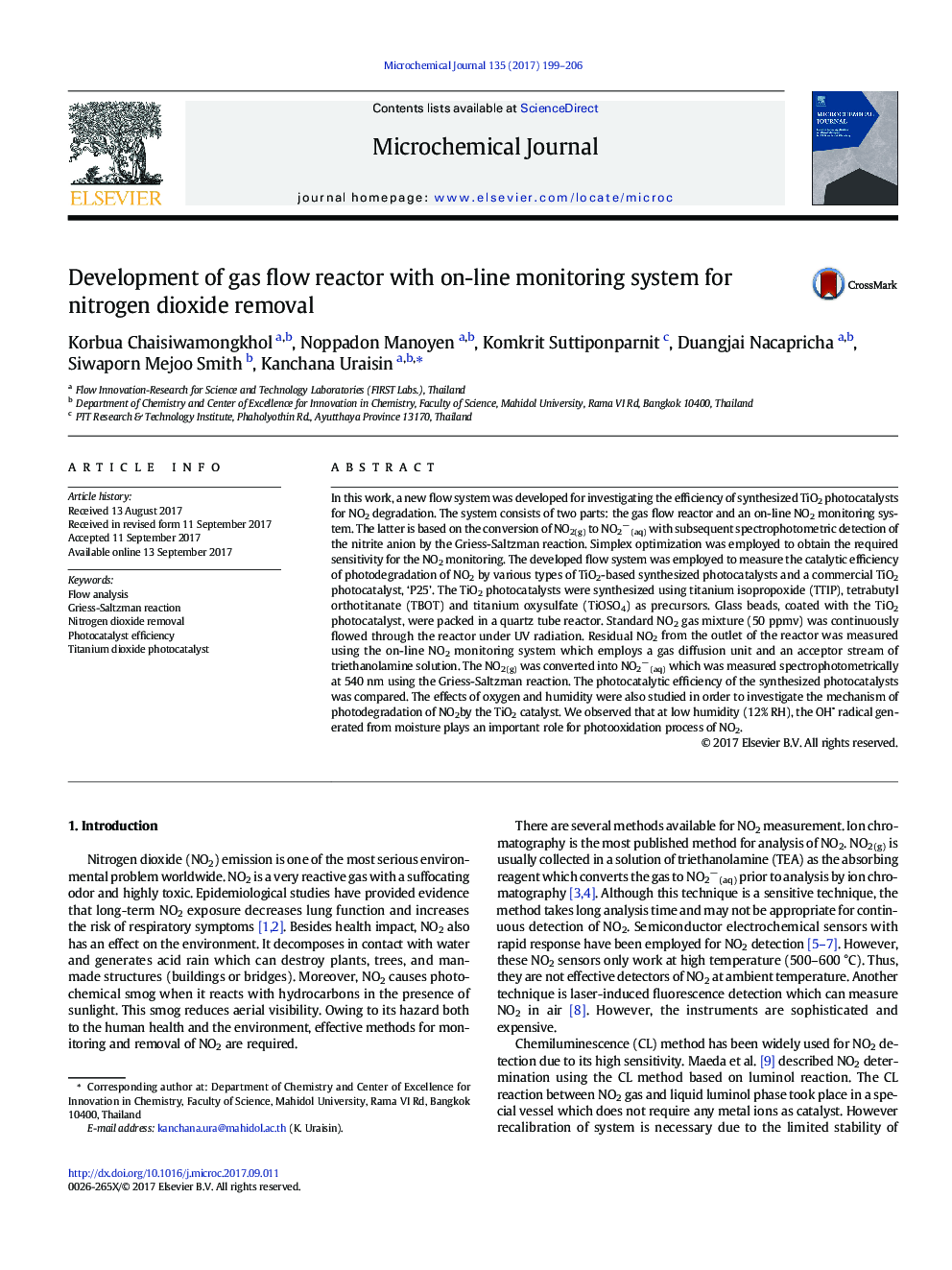| Article ID | Journal | Published Year | Pages | File Type |
|---|---|---|---|---|
| 5139236 | Microchemical Journal | 2017 | 8 Pages |
Abstract
In this work, a new flow system was developed for investigating the efficiency of synthesized TiO2 photocatalysts for NO2 degradation. The system consists of two parts: the gas flow reactor and an on-line NO2 monitoring system. The latter is based on the conversion of NO2(g) to NO2â(aq) with subsequent spectrophotometric detection of the nitrite anion by the Griess-Saltzman reaction. Simplex optimization was employed to obtain the required sensitivity for the NO2 monitoring. The developed flow system was employed to measure the catalytic efficiency of photodegradation of NO2 by various types of TiO2-based synthesized photocatalysts and a commercial TiO2 photocatalyst, 'P25'. The TiO2 photocatalysts were synthesized using titanium isopropoxide (TTIP), tetrabutyl orthotitanate (TBOT) and titanium oxysulfate (TiOSO4) as precursors. Glass beads, coated with the TiO2 photocatalyst, were packed in a quartz tube reactor. Standard NO2 gas mixture (50Â ppmv) was continuously flowed through the reactor under UV radiation. Residual NO2 from the outlet of the reactor was measured using the on-line NO2 monitoring system which employs a gas diffusion unit and an acceptor stream of triethanolamine solution. The NO2(g) was converted into NO2â(aq) which was measured spectrophotometrically at 540Â nm using the Griess-Saltzman reaction. The photocatalytic efficiency of the synthesized photocatalysts was compared. The effects of oxygen and humidity were also studied in order to investigate the mechanism of photodegradation of NO2by the TiO2 catalyst. We observed that at low humidity (12% RH), the OH
- radical generated from moisture plays an important role for photooxidation process of NO2.
- radical generated from moisture plays an important role for photooxidation process of NO2.
Keywords
Related Topics
Physical Sciences and Engineering
Chemistry
Analytical Chemistry
Authors
Korbua Chaisiwamongkhol, Noppadon Manoyen, Komkrit Suttiponparnit, Duangjai Nacapricha, Siwaporn Mejoo Smith, Kanchana Uraisin,
